Improve activity discoverability on an outdoor activity website
Project Partner
My Role
UX Researcher (Team of 5 UX Researchers)
Research Methods
Desk Research, Critical User Journey, Competitive Analysis, User interview
Duration
1 month
Background
Women’s Wilderness is a non-profit organization based in Boulder, Colorado, since 1998. They are aimed at empowering women and nonbinary individuals through the following outdoor programs:
- Adult programs for women and non-binary BIPOC:
- Trailblazers
- Summit Sisters!
- Custome Programs
- Youth programs for girls in 4th- 12th grade:
- Outdoor Girls
- Girls Lead For Life
In 2024, Women’s Wilderness served over 700 women, girls, and non-binary participants.
Project Challenge
- Uncover any usability issues on mobile and desktop
- Increase discoverability and awareness of programs
- Understand what a similar organization's website is doing well vs. not doing well against Women’s Wilderness
Process
Desk Research
My team and I kicked off this project by collecting any existing information online to build our understanding of who Women’s Wilderness is.
- Target Audience:
- 18-35 years old
- Women or nonbinary individuals
- All backgrounds, especially outdoor enthusiasts
- Mission:
- Create a community that fosters social, emotional, and leadership development through outdoor courses.
- Comparable Organizations:




💡 These findings will guide us through the rest of the research process, such as who to recruit for user interviews, which women's outdoor groups to learn from, and what design solutions can align with their organizational mission.
Competitive Analysis & Critical User Journeys (CUJ)
Using competitive analysis to compare Women’s Wilderness with another organization can help identify common usability issues and allow Women’s Wilderness to adopt solutions that another organization uses to satisfy user needs.
Since Backcountry Beauties is a Colorado-based organization focused on empowering women through outdoor adventures, we chose it to compare with Women’s Wilderness. I collaborated with 3 other UX Researchers, pretending to be a user to go through one of the following tasks and listed our the strength and weakness:
💡 These tasks represent the most critical user flows of the website, and we assume most users use mobile to access these tasks, so we evaluated these journeys on mobile.
CUJ 1: Learning about the organization
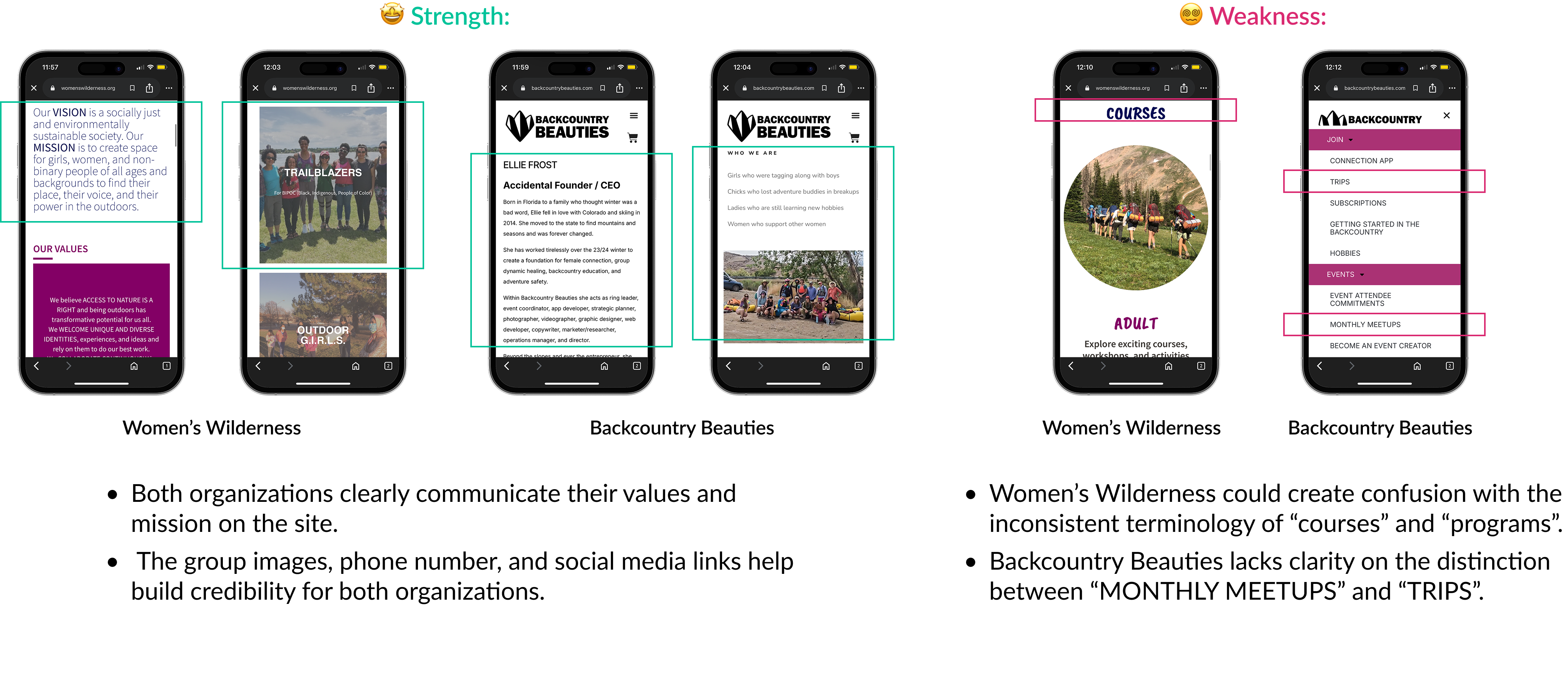
CUJ 2: Searching for a program
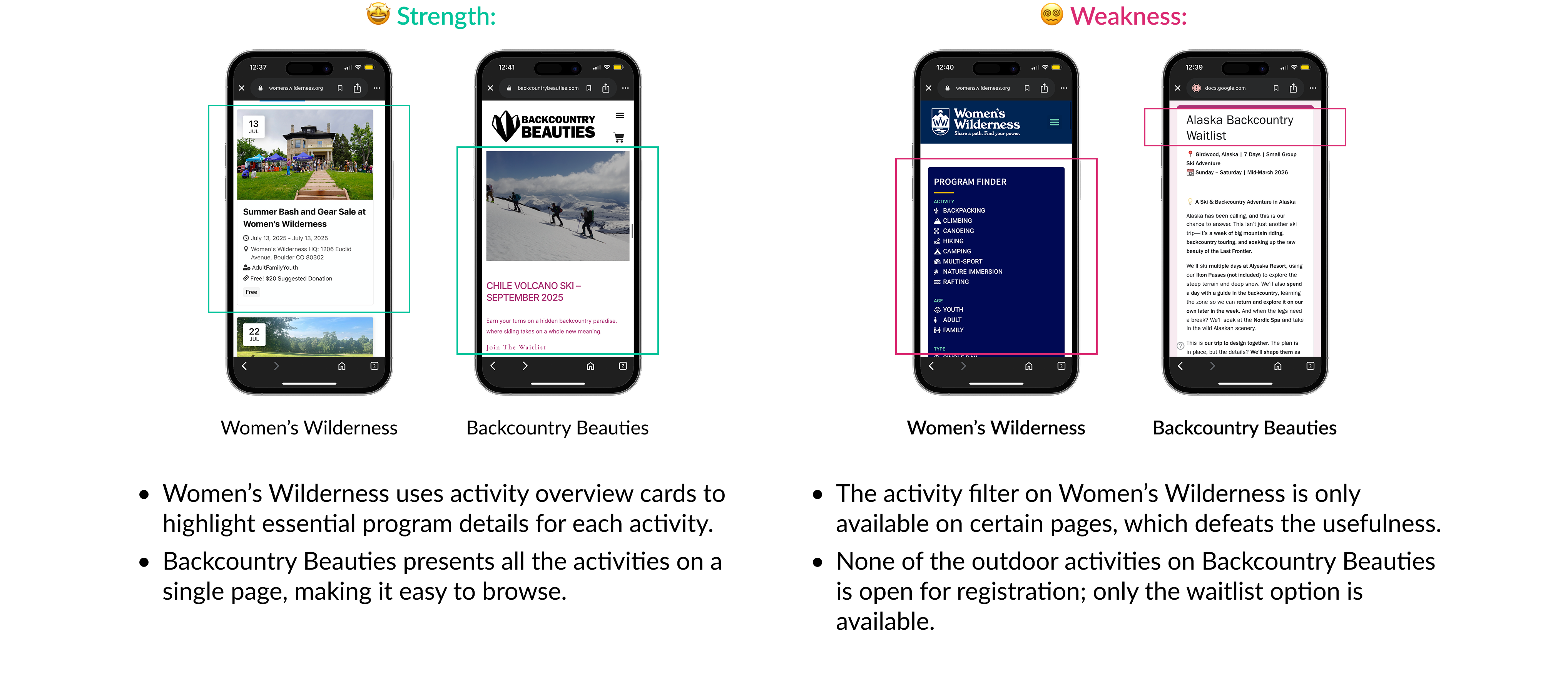
CUJ 3: Registering for a program
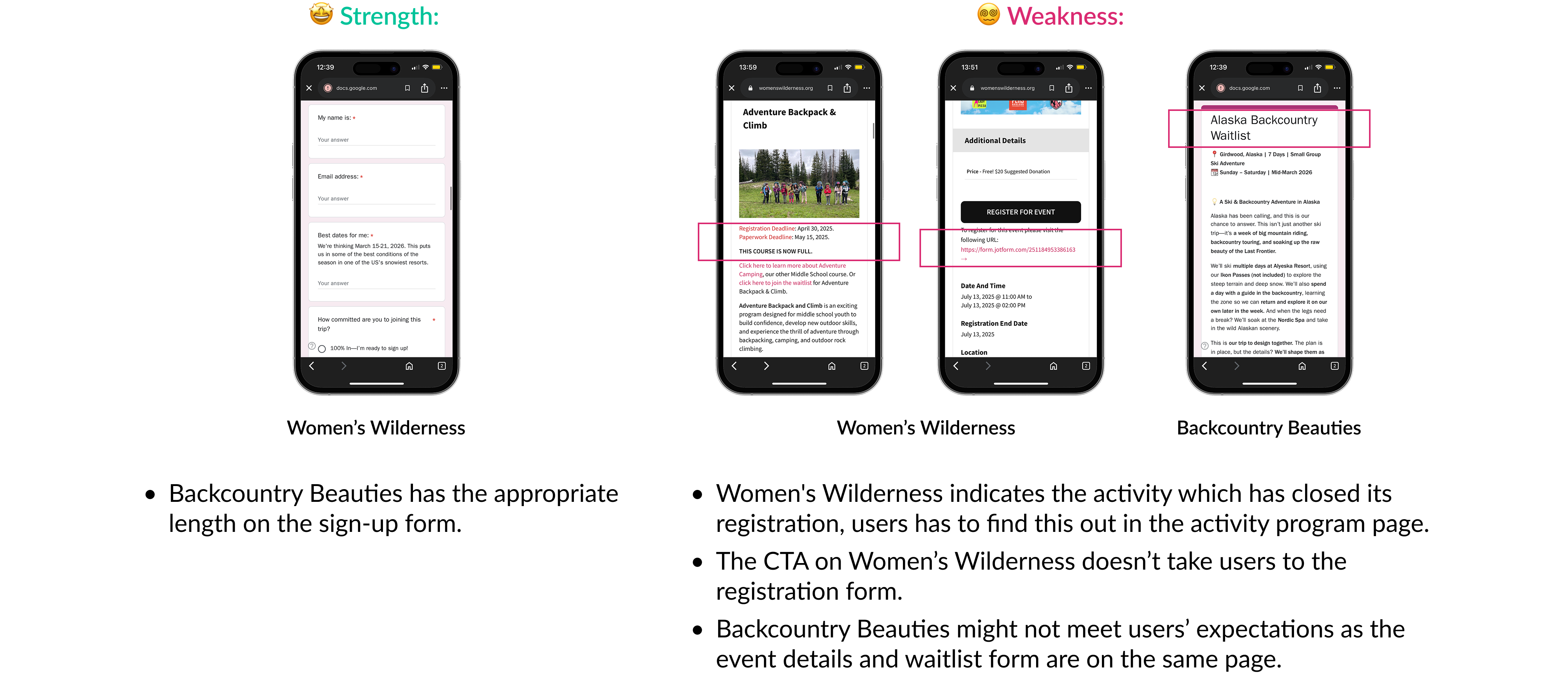
CUJ 4: Supporting the organization

User Interviews
My team and I aimed to recruit 5 qualified participants, because Nielsen Norman Group believes 5 people can reveal 85% of the usability issues, so we set up a screener to filter our potential interviewees on userinterviews.com. Since the pilot test went very well, we also included her responses in our research, and we have a total of 6 participants.
Background details of the interviewees:
- Participants: 6 women
- Duration: 45 minutes/virtual interview
- Location: All based in Colorado
- Age Range: 23 - 34 years old
- Outdoor Group Activity Experience:
- 3 participants regularly take part in organized outdoor group activities
- 3 participants have not participated yet, but expressed strong interest in starting
To maintain the consistency in the interviews within the group, I followed a script and a list of questions to ask. I also asked my interviewee to perform the same tasks that we studied during Critical User Journeys, but this time, the journeys are performed on the desktop.
Topics of the Interview Questions:
- First impression
- Activities and programs discovery
- Activity Registration
- Site navigation and other information exploration
Analysis and Synthesis
After conducting the interviews, I met with my group to share the details. We developed a color scheme based on the categories of our interview responses. Each member selected a specific interview topic and applied the corresponding colors to the responses of all participants related to that topic.

Once we had color-coded all the responses, we analyzed the data trends by counting how many participants expressed similar thoughts, actions, or feelings. From this analysis, we wrote our research findings.
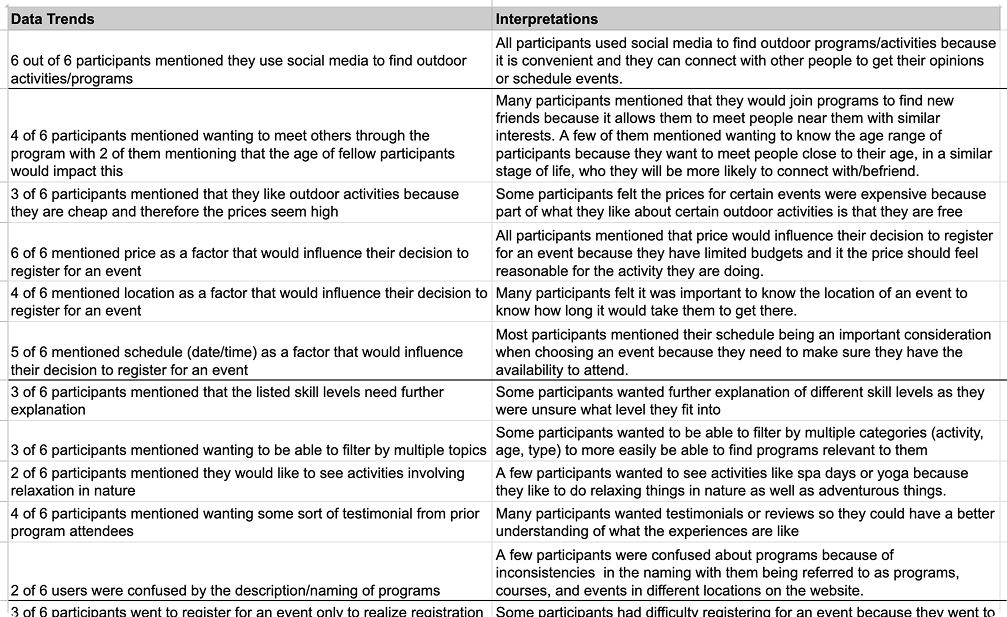
💡 Color scheme and data trend are the tools to help interpret interview responses in this project.
💭 Reflection
- During the competitive analysis, if we could compare multiple competitors, in addition to Backcountry Beauties, we would gain a more comprehensive understanding of other Colorado-based organizations.
- We didn’t have any parent participants to conduct usability interviews with, which meant we missed their perspective on this audience segment.
- We came these recommendations based on our research, but we didn’t conduct usability testing with our target audience to confirm the effectiveness.



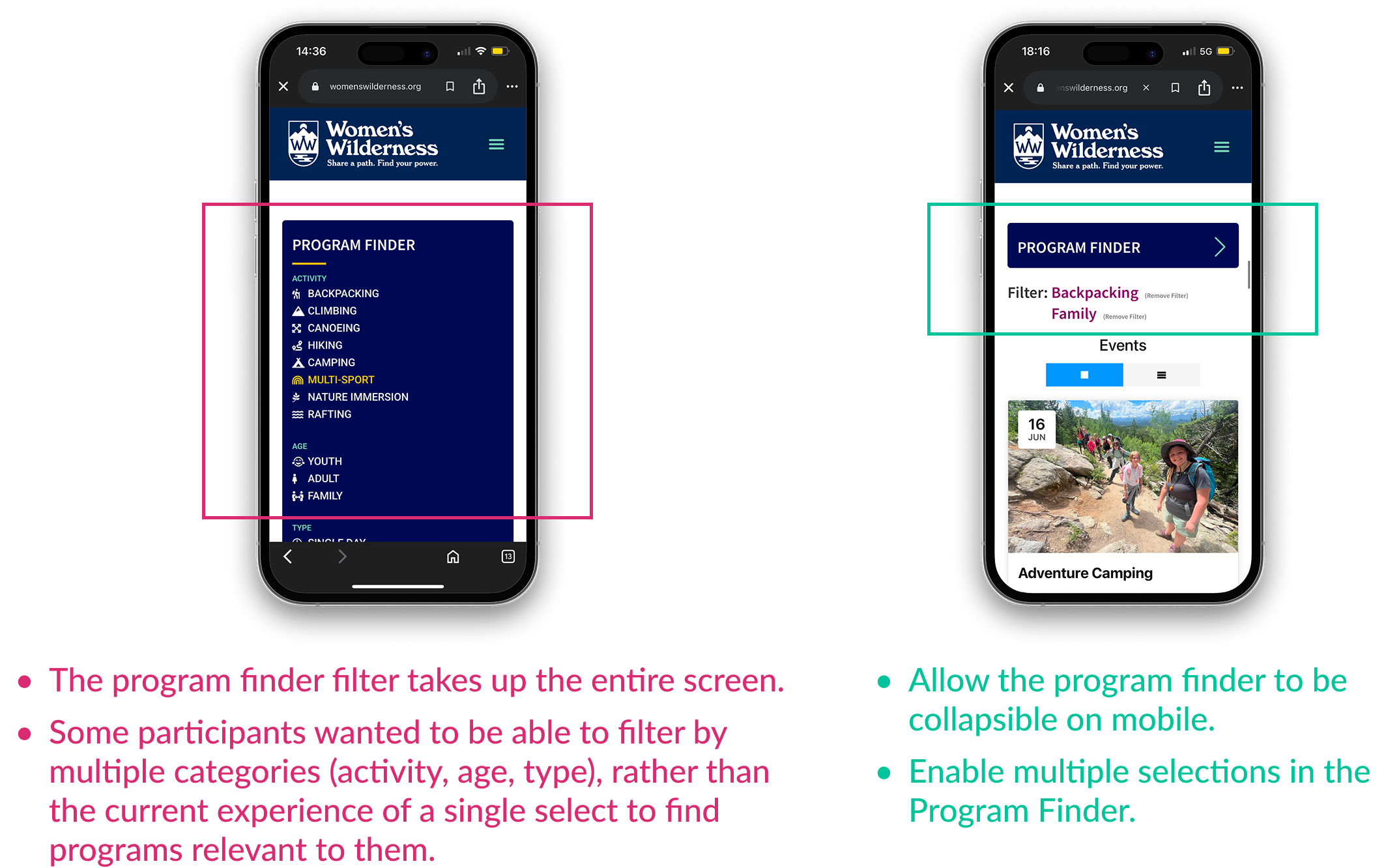
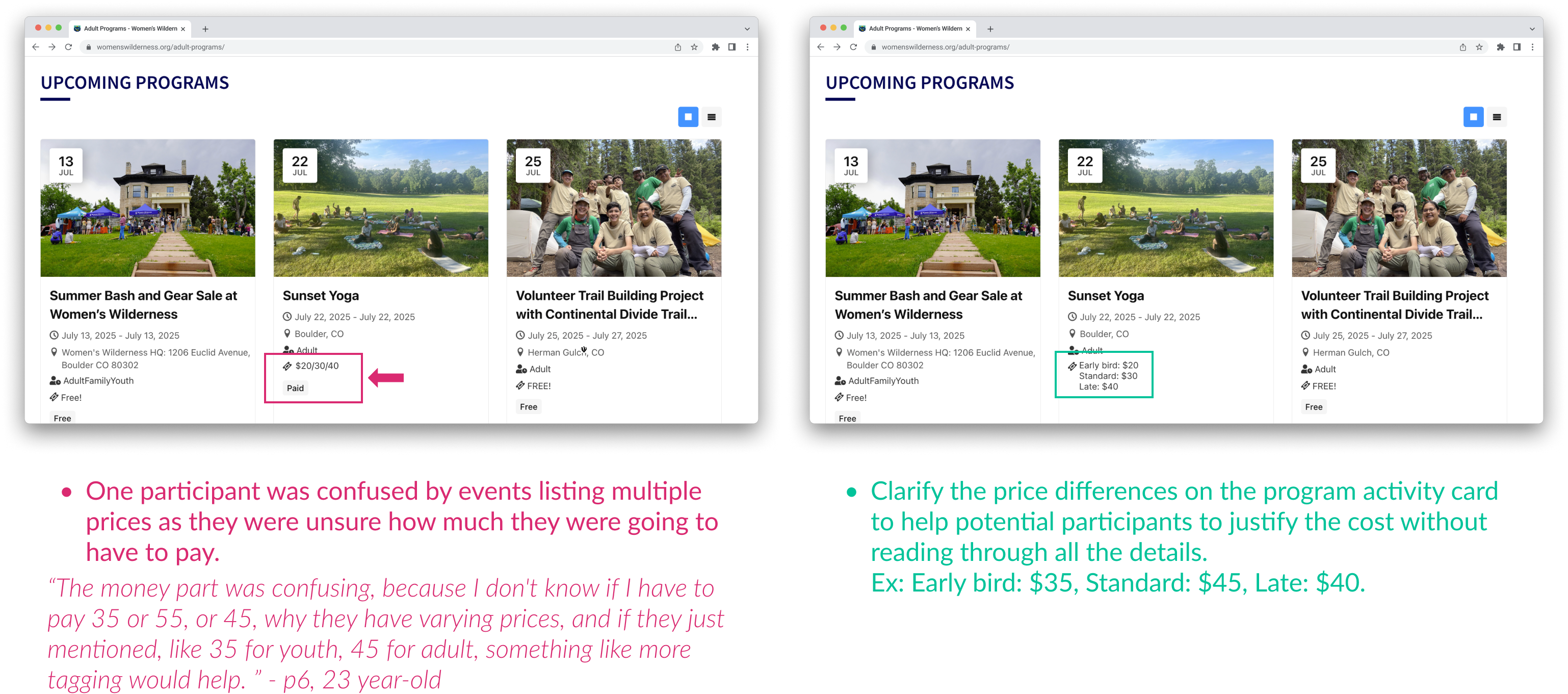
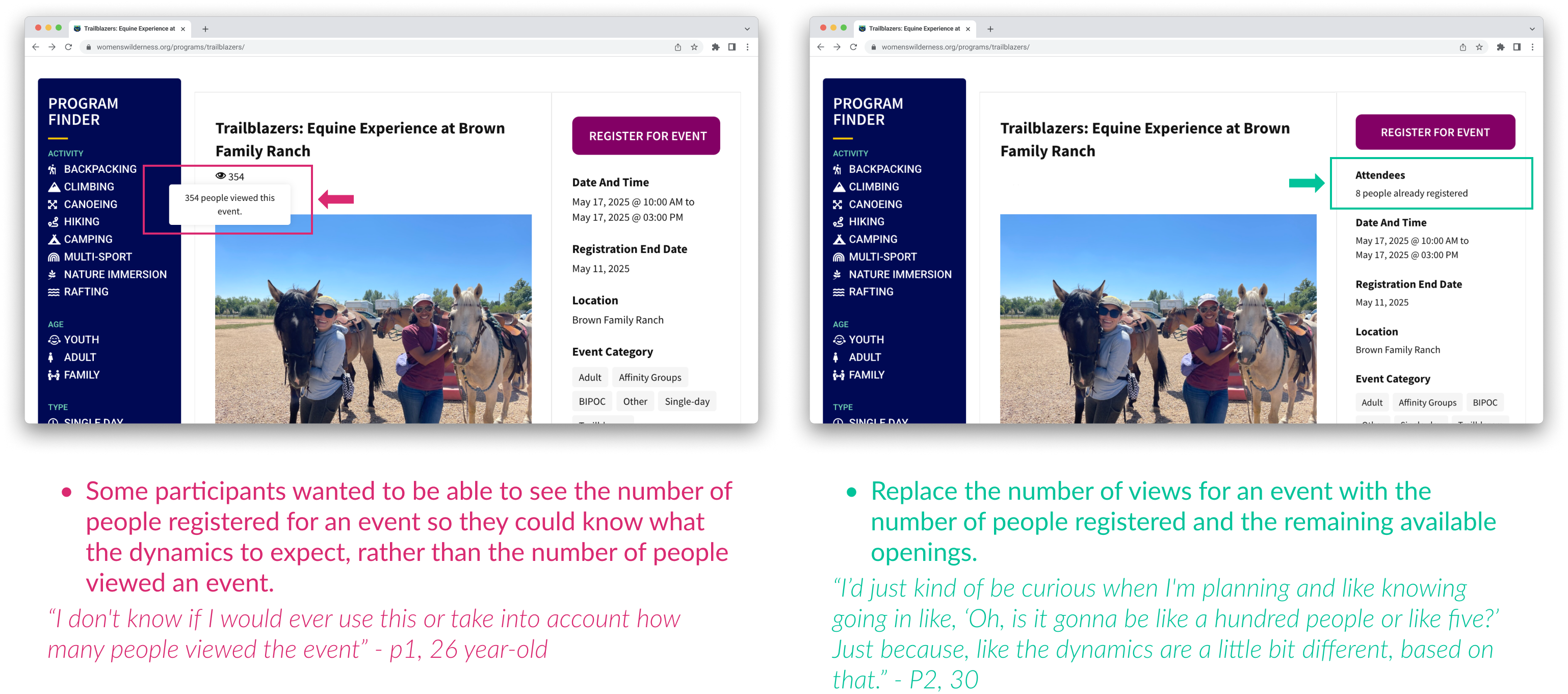
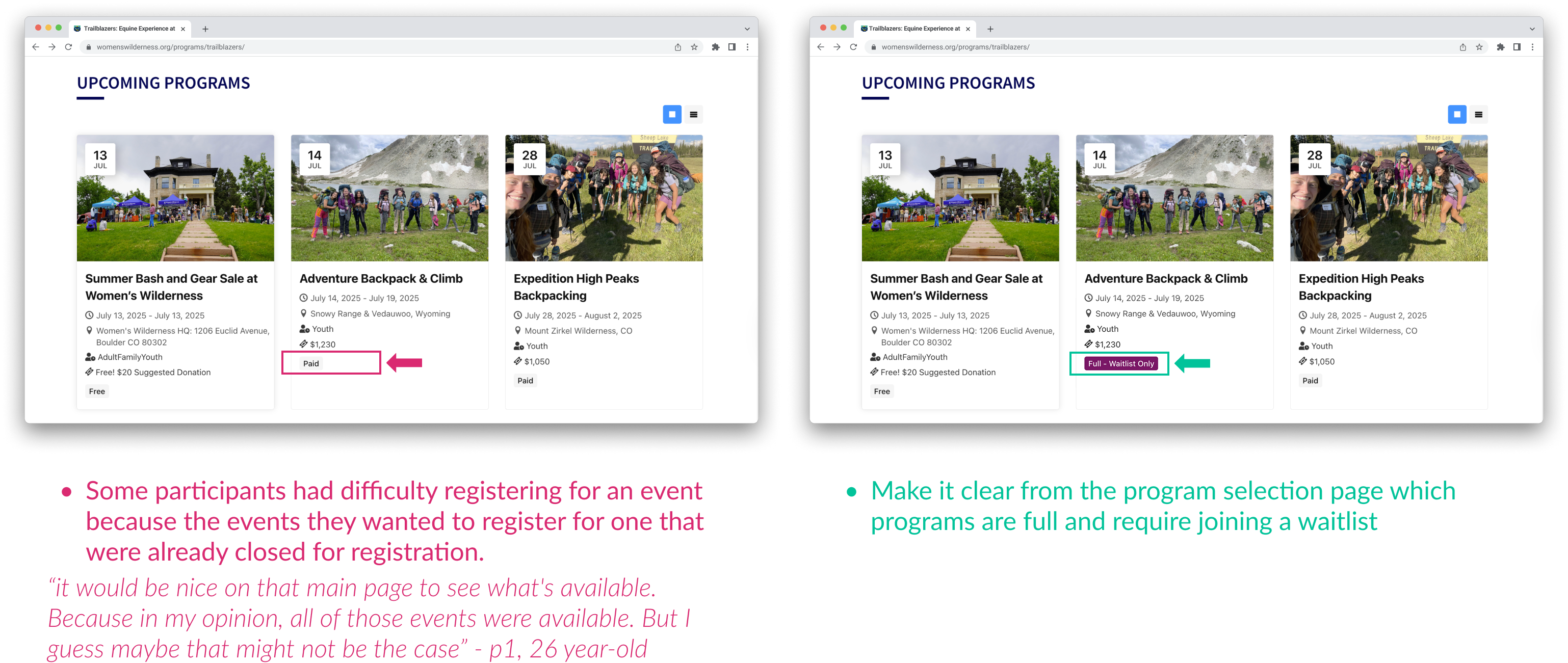
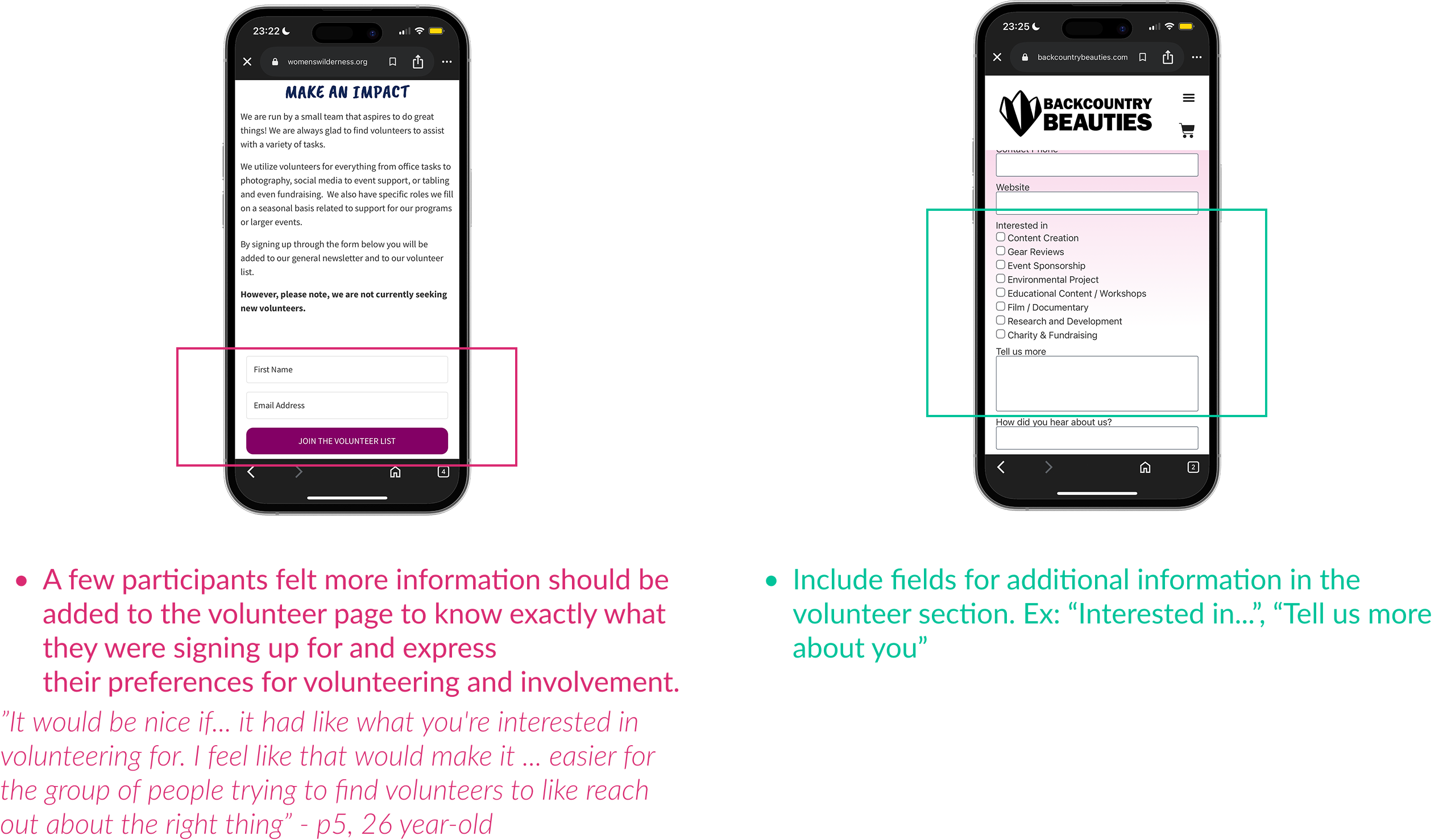
.jpg)

